Democracy and Globalization
Charles L. Nieman | Filed under: Symposia on Democracy
Available for reading here

Available for reading here

Available for reading here
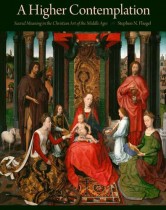
In A Higher Contemplation, author Stephen N. Fliegel introduces medieval Christian iconography and its forms, meaning, function, context, and symbolism to twenty-first-century audiences. Serving as a guide to the subtleties, complexities, richness, range, and antiquity of medieval Christian artistic traditions and the multiple levels in which they can be understood, this book will aid the reader in a journey of discovery and understanding of those sacred images. Beautifully designed will full-color illustrations, A Higher Contemplation will appeal to students, teachers, travelers, art lovers, and those with an aspiring interest in the culture of the Middle Ages and the history of religion.

Historians possess the power to shape the view of history for those who come after them. Their efforts to illuminate significant events of the past often result in new interpretations, which frequently conflict with ideas proposed by earlier historians. Invariably, this divergence of thoughts creates a dissonance between historians about the causes and meanings of prior events. The Kent State University Press’s new Interpreting American History Series aims to help readers learn how truth emerges from the clash of interpretations present in the study of history. In the series’s first volume, Interpreting American History: The Age of Andrew Jackson, experts on Jacksonian America address the changing views of historians over the past century on a watershed era in U.S. history.
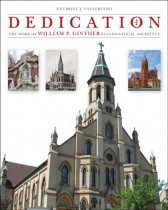
Akron-based architect William P. Ginther (1858–1933) designed sixty-three Roman Catholic churches, primarily in Ohio and Pennsylvania. Dedication is the first book to document his architectural designs. By combining historical images with twenty-first-century photographs, author Anthony J. Valleriano presents the most comprehensive overview of Ginther’s architectural career available today.
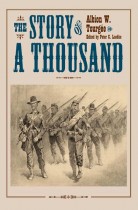
Written at the behest of his former comrades in the 105th Ohio, The Story of a Thousand draws on Tourgée’s own wartime papers, as well as diaries, letters, and recollections of other veterans, to detail the remarkable story of the regiment during its campaigns in Tennessee, Kentucky, Georgia, and Sherman’s March to the Sea. Tourgée concentrates on the lives and experiences of the enlisted soldiers, describing the backgrounds of the men and how they rallied around the Union flag as citizen soldiers and also on discussions about the role of slavery as the impetus of the war. Tourgée’s concern for the common soldier prefigures the scholarship of twentieth-century historians, such as Bell Irvin Wiley, who devoted attention to the men in the ranks rather than the generals and politicians in charge.
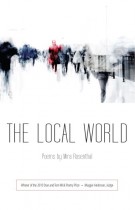
“Mira Rosenthal’s The Local World incorporates deeply lived experience and mystery in a fluent shape-shifting that can take you anywhere— and bring you back, changed. The poems are beautifully crafted narratives of loss, travel, and salvage. There is a damaged family at the heart of these poems, an abandoned farm, and many rooms, parks, and train cars in far places. Yet, like all really good poems, Rosenthal’s language consistently rises above its cries to wonder and beauty. What a joy to find this stunning first book to award the Stan and Tom Wick Poetry Prize.” —Maggie Anderson, Judge

“They Have Left Us Here to Die” is an edited and annotated version of the diary Sergeant Adair kept of his seven months as a prisoner of war. The diary provides vivid descriptions of each of the five camps as well as insightful observations about the culture of captivity. Adair notes with disdain the decision of some Union prisoners to take the oath of allegiance to the Confederacy in exchange for their freedom and covers the mock presidential election of 1864 held at Camp Lawton, where he and his fellow inmates were forced to cast votes for either Lincoln or McClellan. But most significantly, Adair reflects on the breakdown of the prisoner exchange system between the North and South, especially the roles played by the Lincoln administration and the Northern home front. As a white soldier serving with African Americans, Adair also makes revealing observations about the influence of race on the experience of captivity.
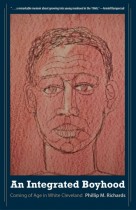
In An Integrated Boyhood, Richards candidly describes how this exemplary middle-class Cleveland sojourn left him hopelessly confused and dislocated at the very moment of his parents’ triumph. His narrative of success provides the background to a more private turmoil: Richards’s struggle to read the shifting meanings of his privileged experience amid the city’s shifting racial lines, the fringe on the Left, the tumult of rising black consciousness, and the fears of nervous white suburban neighbors. This coming-of-age story sings the undersong of an older generation’s hard-won success. Like all black Clevelanders, Richards was forced to struggle for his understanding of the city’s—and his own—endless racial confusion in the midst of frightening historical change. It is this reality that recurs throughout Richards’s memoir: the early encounters of a scared, bookish African American boy from Mt. Pleasant with what can only be described as the real world.

Since World War II, American historians have traditionally sided with the Loyalist supporters, validating their arguments that the pro-Nationalists were un-American for backing an unpalatable dictator. In Arguing Americanism, author Michael E. Chapman examines the long-overlooked pro-Nationalist argument. Employing new archival sources, Chapman documents a small yet effective network of lobbyists—including engineer turned writer John Eoghan Kelly, publisher Ellery Sedgwick, homemaker Clare Dawes, muralist Hildreth Meière, and philanthropist Anne Morgan—who fought to promote General Franco’s Nationalist Spain and keep the embargo in place.